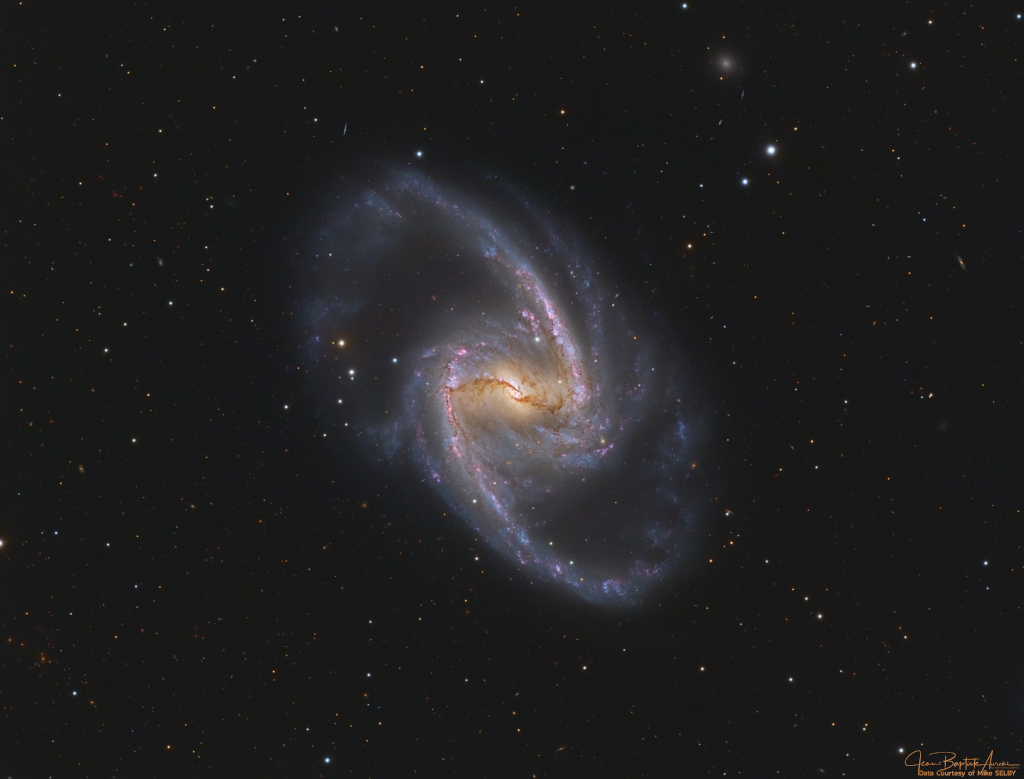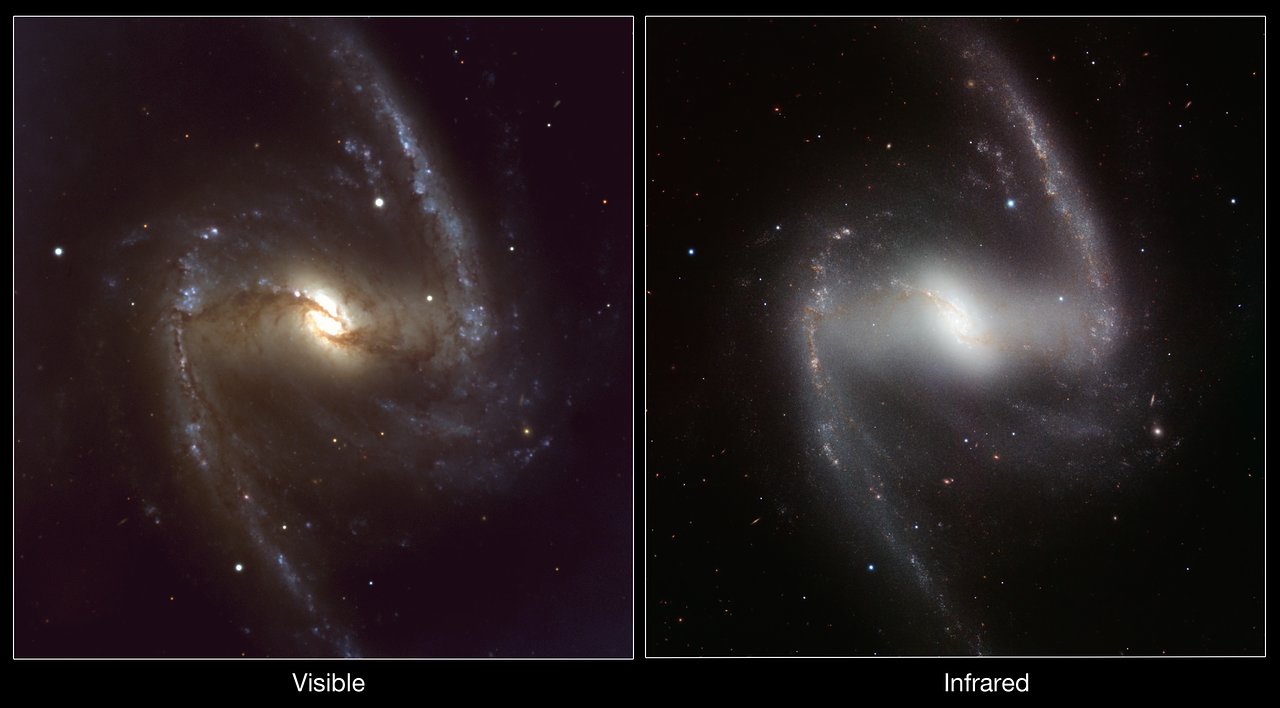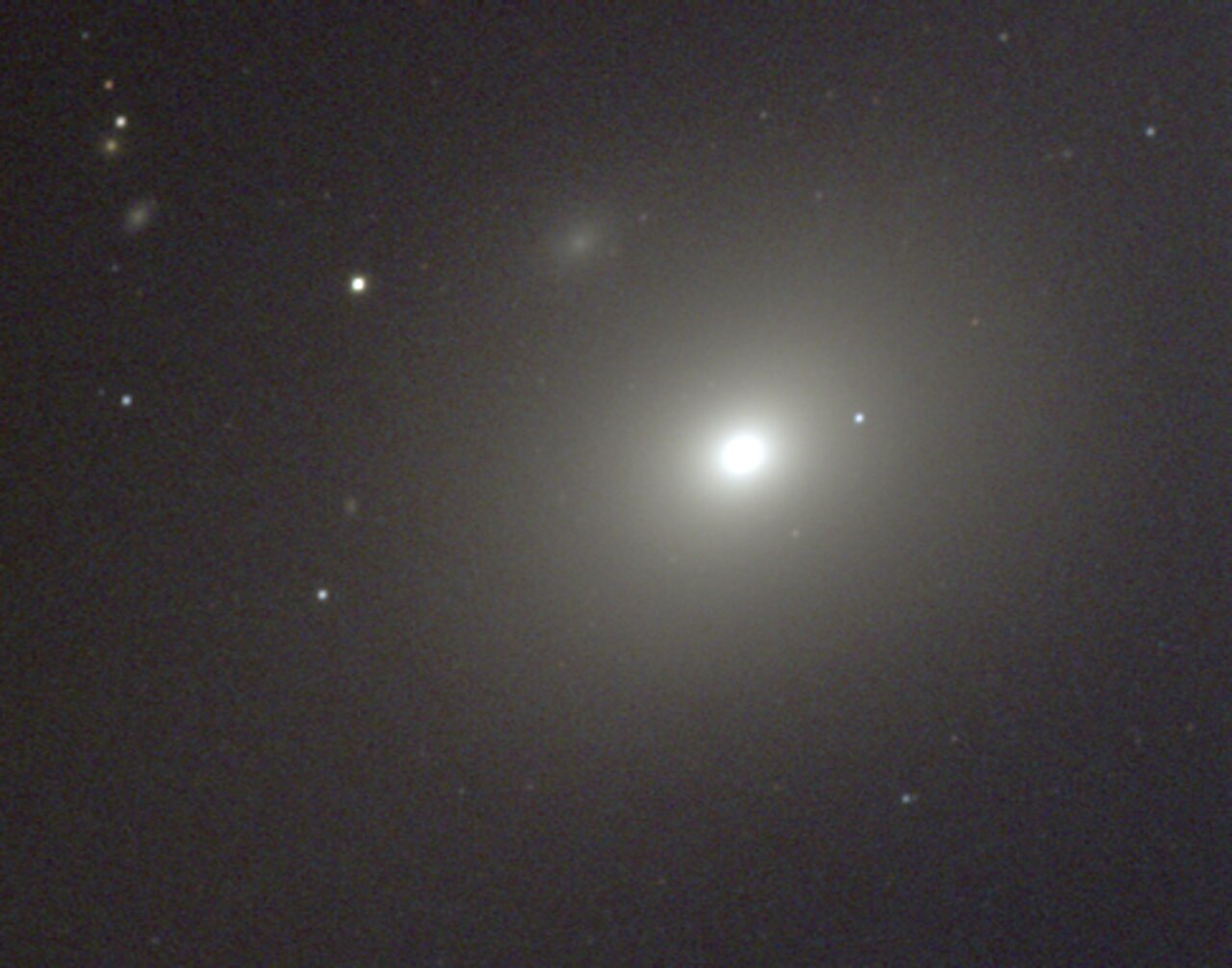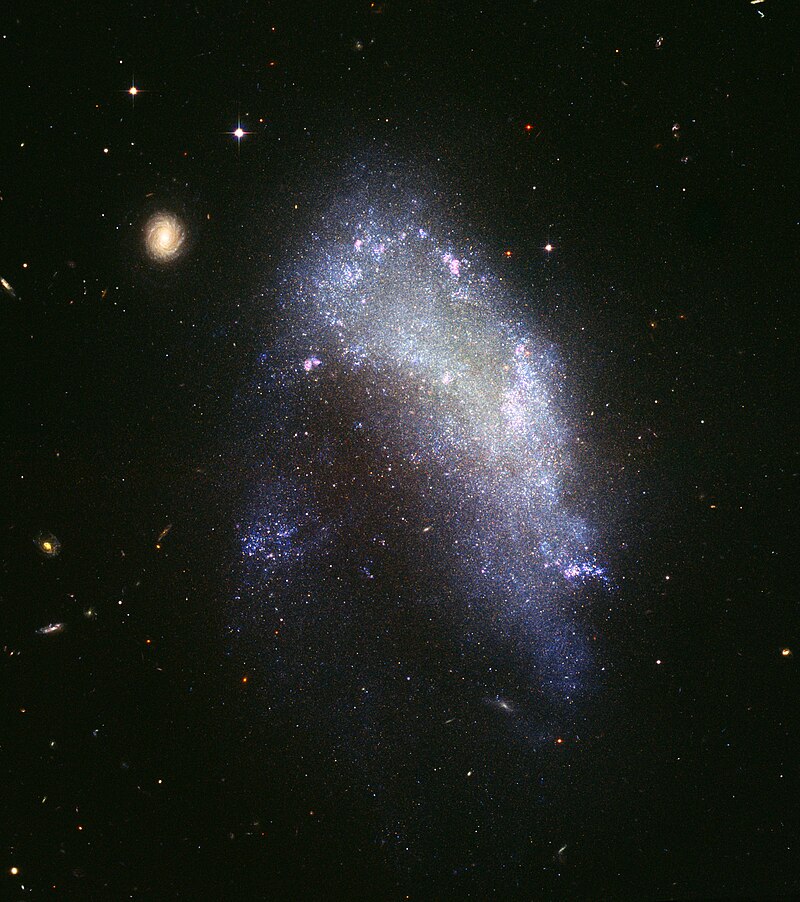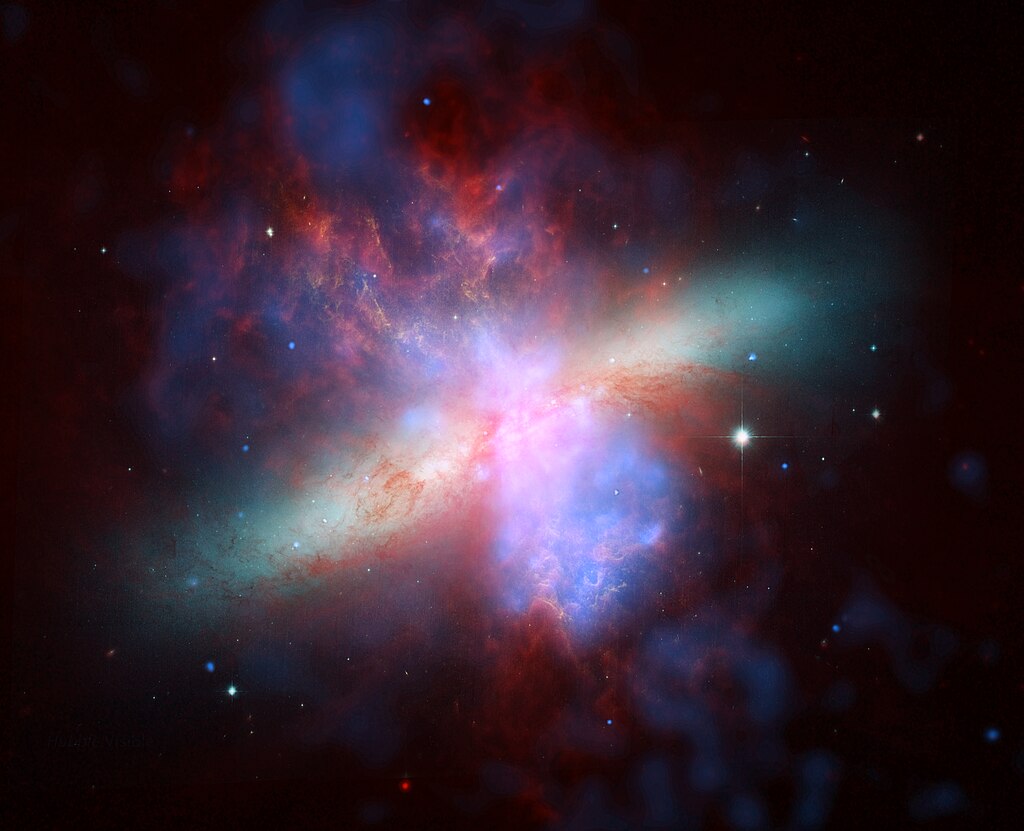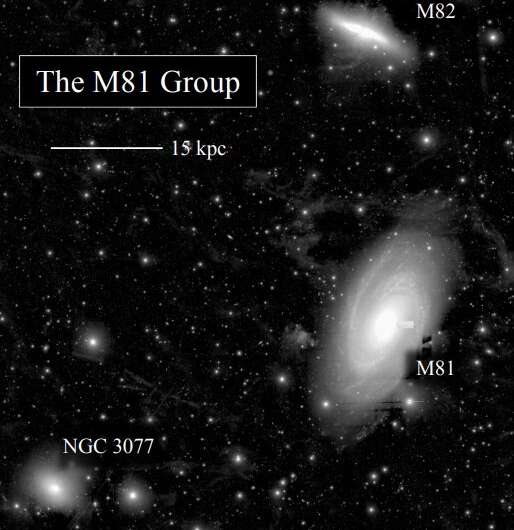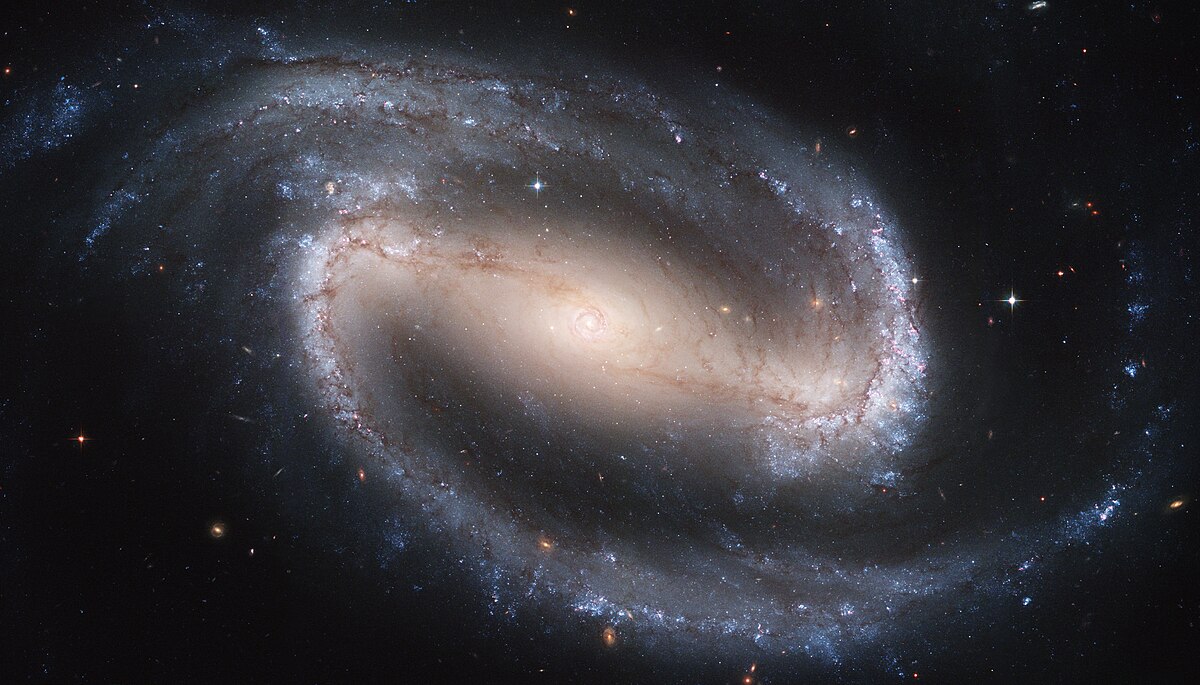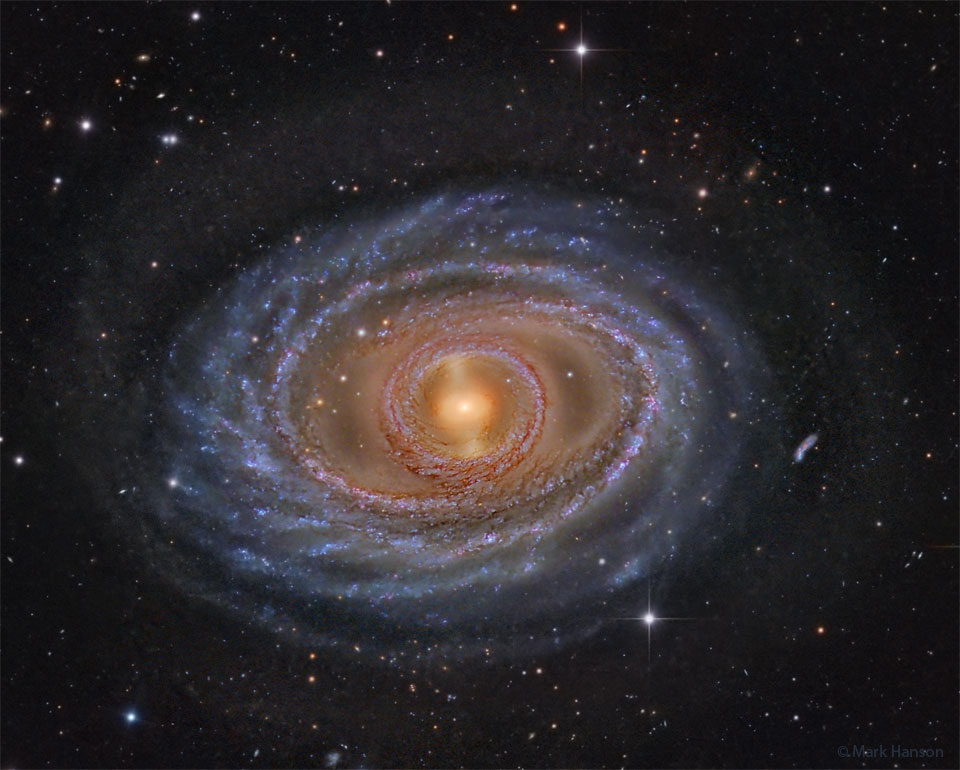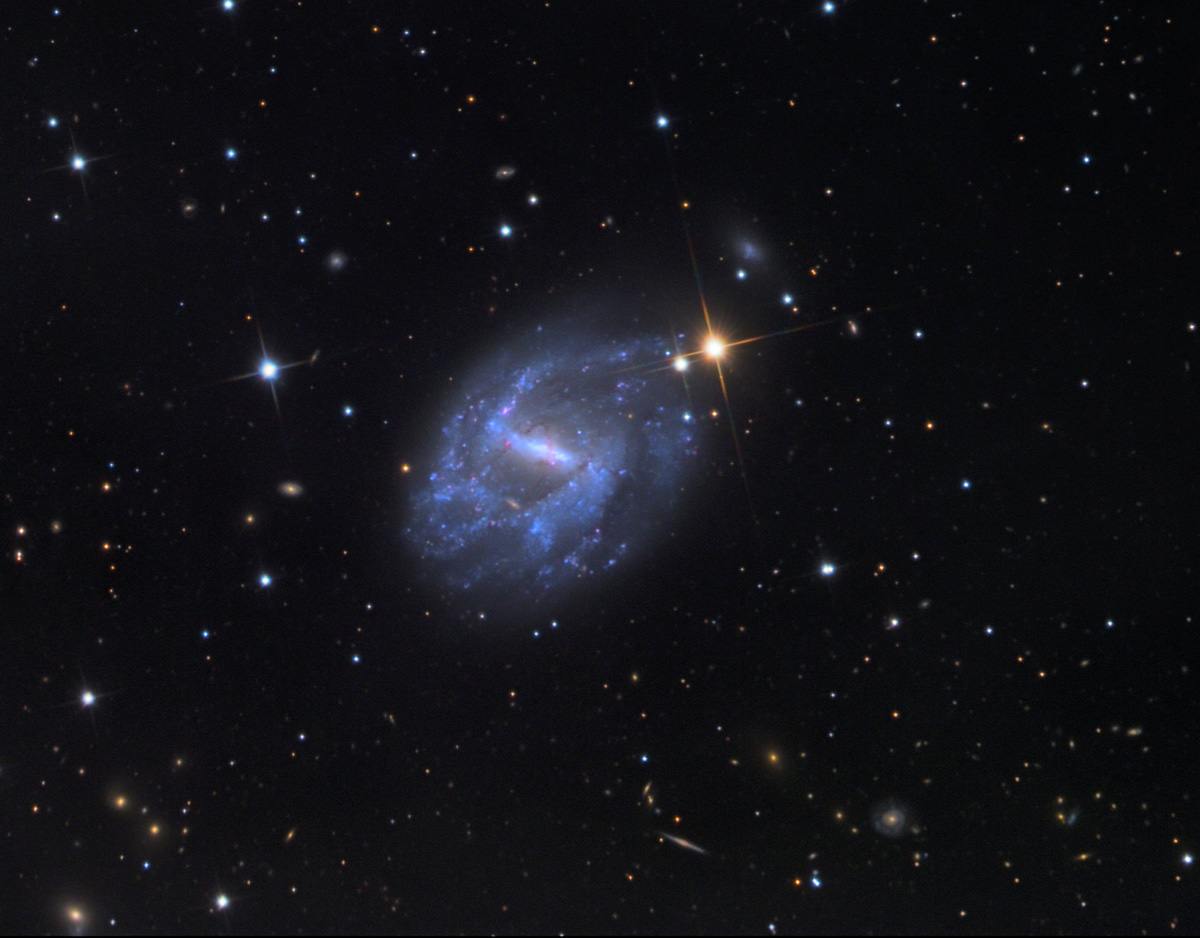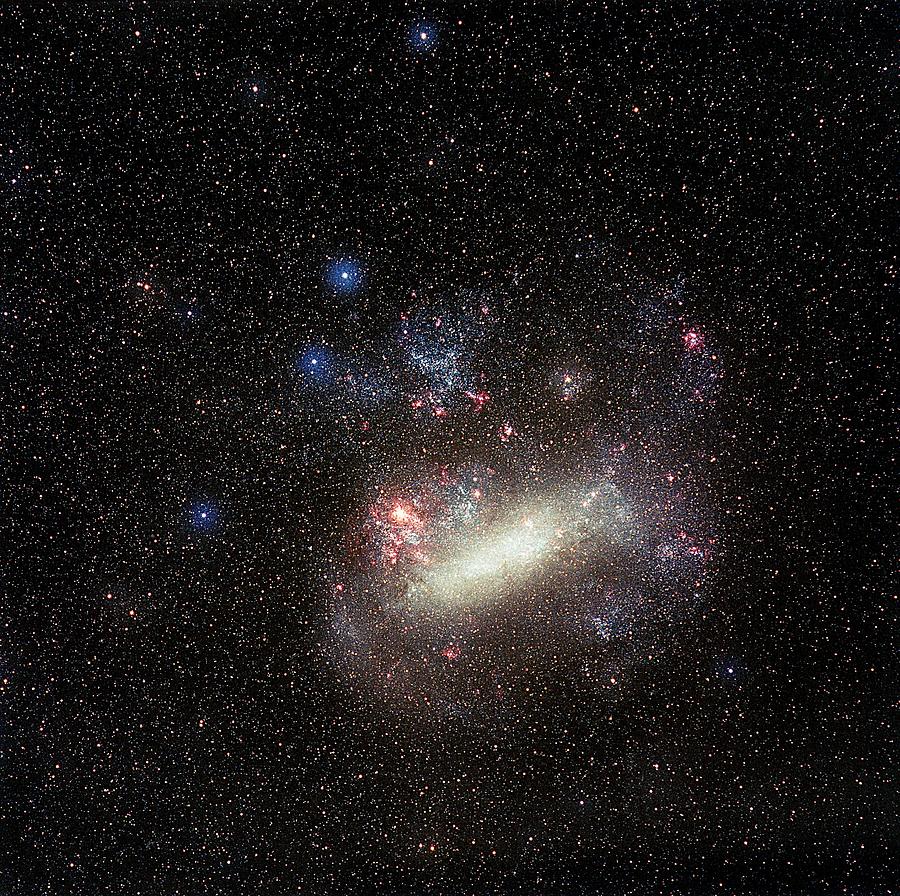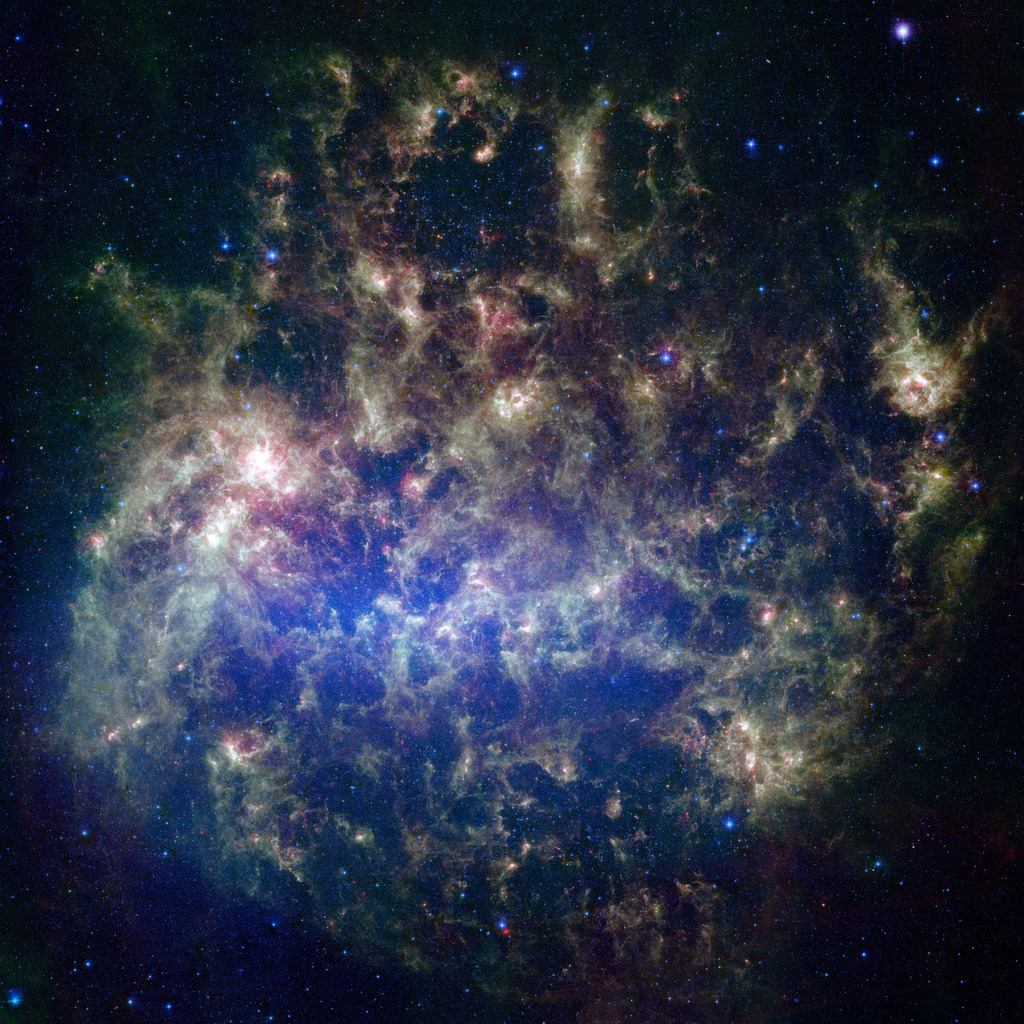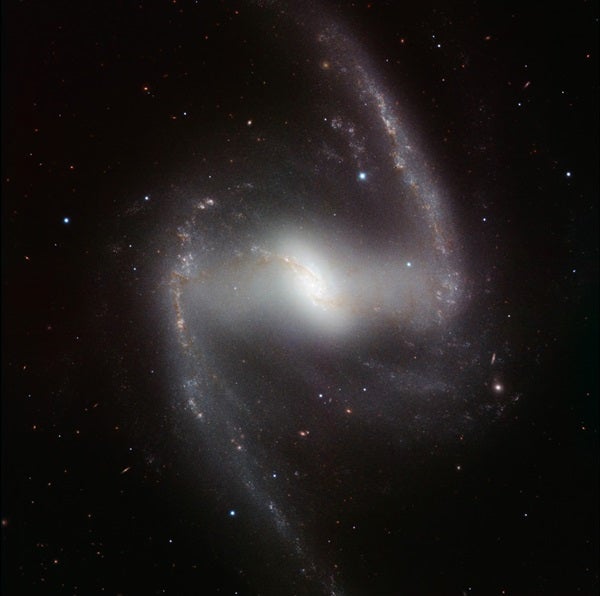Oh
yeahhh!!! I saw Jean-Baptiste Auroux and Mike Selby's picture of NGC 1365 in the
Recent Submissions thread just yesterday, and I thought it looked great!

And it's lovely to see such a beautiful LRGB + Hα portrait of a starforming spiral galaxy, so that it can really
strut its stuff on the galactic catwalk! I love the beautiful shape and the hues of yellow, pink and blue of this galaxy!
When I first saw a picture of this iconic galaxy - it was really long ago, and the picture was in black and white - I was unimpressed. How weird it looked! There was a very elongated fat central "belt" and then, from one end of this long belt, there was one straight arm up, and from the other end, one straight arm down. How weird it looked!
But really, as today's APOD shows us, the arms of NGC 1365 curve back gracefully, so that they almost seem to form a full disk of NGC 1365. It is the arms of another galaxy, NGC 6872, that seem to "reach for infinity"!
NGC 1365 is sort of lurking on the outskirts of the Fornax Cluster, which otherwise is heavily dominated by elliptical galaxies:
I chose this ESO image over the beautiful
APOD from January 29, 2022 that today's caption links to, because the APOD is too large for me to post without bystander being angry with me. But I do recommend the APOD, because in that picture you can easily tell the difference between stars and galaxies.
In any case, it certainly to be expected that NGC 1365 wouldn't dwell in the center of a group of large ellipticals. In large galaxy groups, galaxies constantly interact and chaff against each other, destroying dust lanes and driving gas out of one another, and the large central giant will (at least occasionally) zap the other galaxies with a jet from its black hole (and, even if it misses, it will heat up the intergalactic medium and make everything turbulent around it).
As a result of all the bullying near the center of a galaxy cluster, practically all the galaxies there will end up as yellow blobs. The elegant spiral galaxies that belong to galaxy clusters will almost always be found well away from the center. Take a look at the picture below of an (annotated but blurry) wide field chart of the Virgo Cluster. The center of the Virgo Cluster is at bottom left, and giant elliptical monster M87 is actually off the chart. At lower left, circled in yellow, you can see another large elliptical galaxy, M86, and at upper center, you can see large spiral M100 that is a good distance away from the cluster center:
Annotated wide field view of a part of the Virgo Cluster. The cluster center
is at lower left. M86, circled in yellow, is close to the cluster center,
while M100, circled in blue, is much farther way from it. Credit: NASA, ESA, DSS 2
So what do M86 and M100 look like?
As you can see, the conditions near the center of a galaxy cluster are not conducive to the formation of elegant spiral arms with dust lanes and young blue clusters and pink nebulas!
And a small blue galaxy falling into the Fornax cluster will soon be aware of this! Both in the APOD from January 2022 and in the ESO image, you can see this little blue whiff of a thing at about 9 o'clock. That is NGC 1427A, and it is a hapless dwarf galaxy helplessly falling into the Fornax Cluster.
Let's look a little bit more at the inner workings of NGC 1365. This is what the central part of NGC 1365 looks like to JWST:
This is how the center of NGC 1365 works:
Optical image of NGC 1365 from the Dark Energy Survey (left)
and schematics illustrating the structures within the central galactic bar (right).
Credit: Schinnerer et al. 2023
JWST + Hubble image of the center of NGC 1365.
Note the gas flowing into the center along the dust lanes.
Gas is flowing into the center of NGC 1365, leading to massive star formation there. I'm thinking of nearby galaxy M82. So much of the gas of M82 has flowed into the center of this galaxy that star formation has stopped in the disk. But there is so much star formation in the center that ionized gas is being violently expelled from the center of M82.
The reason for the concentration of gas in the center of M82 is the interaction between M81, M82 and NGC 3077.
NGC 3077 is also part of the action. And even more than M82, it has lost its gas almost everywhere except in its enter. And just like M82, NGC 3077 is sporting a brilliant burst of star formation in its center.
Ann
 NGC 1365: Majestic Island Universe
NGC 1365: Majestic Island Universe